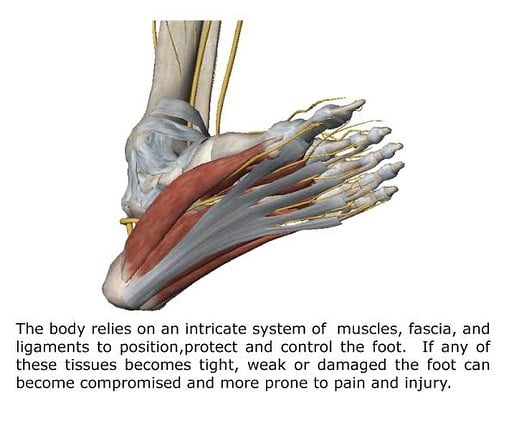Arch support, orthotics, heel lifts, rigid ankle support, are all common components of footwear. They might have been implemented to correct a problem like plantar fasciitis or calf pain, or often they’re just part of the expensive supportive shoes we buy. But should we have all this “support” at all?

In a study on foot strength in runners, they were split into 3 groups; normal “supportive” shoes, minimalist shoes, and a foot strengthening exercise group. All of them kept their normal running regimes with some changing their type of shoe, or incorporating foot strengthening exercise into their regime.
THE RESULTS?
Just by changing to minimalist footwear, that group of runners had dramatic increases in their foot and ankle strength as if they were doing the strengthening exercises that the other group were doing on top of their running.
It’s no surprise really – everyone recognises the concept of “use it or lose it”. Unfortunately that rationale rarely extends to feet, and now we’ve been conditioned to seek out “supportive” shoes and add-ons that will take over the job that our foot muscles and tissues should be doing themselves e.g. supporting our arch, stabilising our ankle.
BUT WAIT, THERE’S MORE
Custom orthotics and heel lifts are something I see often in new patients, and are often shaped with one thicker and higher than the other – many times being significantly different from left to right. Sometimes this is to address calf tension or foot mechanics, other times it’s to address total leg length differences themselves.

The big issue here comes about when the leg length difference being corrected isn’t coming from differences in bone length or foot mechanics, but rather from changes at the hips and pelvis. These “functional leg length” changes are far more common to see than a significant bone length variation. In practice, I regularly see and correct leg length differences of 1-2cm (and occasionally greater), coming from issues at the hips and pelvis.
Often these leg length measurements have been done quite accurately (at the time) and corrected for with orthotics or lifts to lengthen the “short” leg when you stand, but then the actual issue can be compounded and reinforced for years afterwards.
Additionally, people often use these orthotics for years while hip and pelvic issues may develop or change in that time, meaning the orthotics are now no longer suited. A recent patient I saw had spent the last 2 years with a 1cm lift in a shoe for a leg that was now presenting as 1cm long! The amount of asymmetry in the forces that then have to be absorbed by your feet, ankles, knees, hips, and back as a result of a discrepancy like that can be huge over time.

Do you need orthotics or foot support?
If you’re coming off an injury, having the right support in place is absolutely recommended to aid your recovery. But as with any injury, the later part of healing is all about adapting and strengthening your tissues to be able to handle normal activities and load again. If you never remove the splint, why would your foot ever need to adapt?
When it comes to raised orthotics or lifts, they too can certainly have their place and be very beneficial, but proper investigation needs to be done first to confirm that it is a bone length difference being corrected for and that any other contributing factors have been addressed.
If you’re interested in chiropractic services, feel free to book an appointment or call 0410 841 193.
